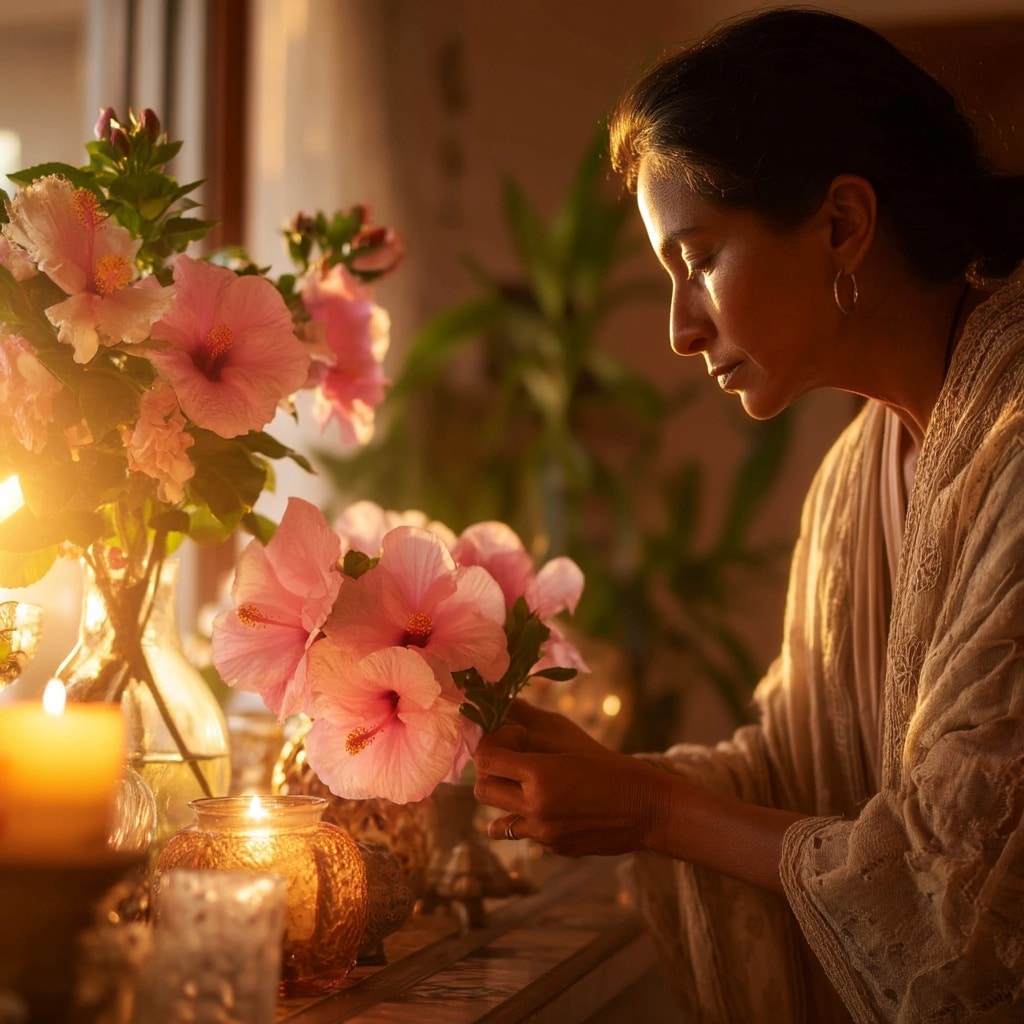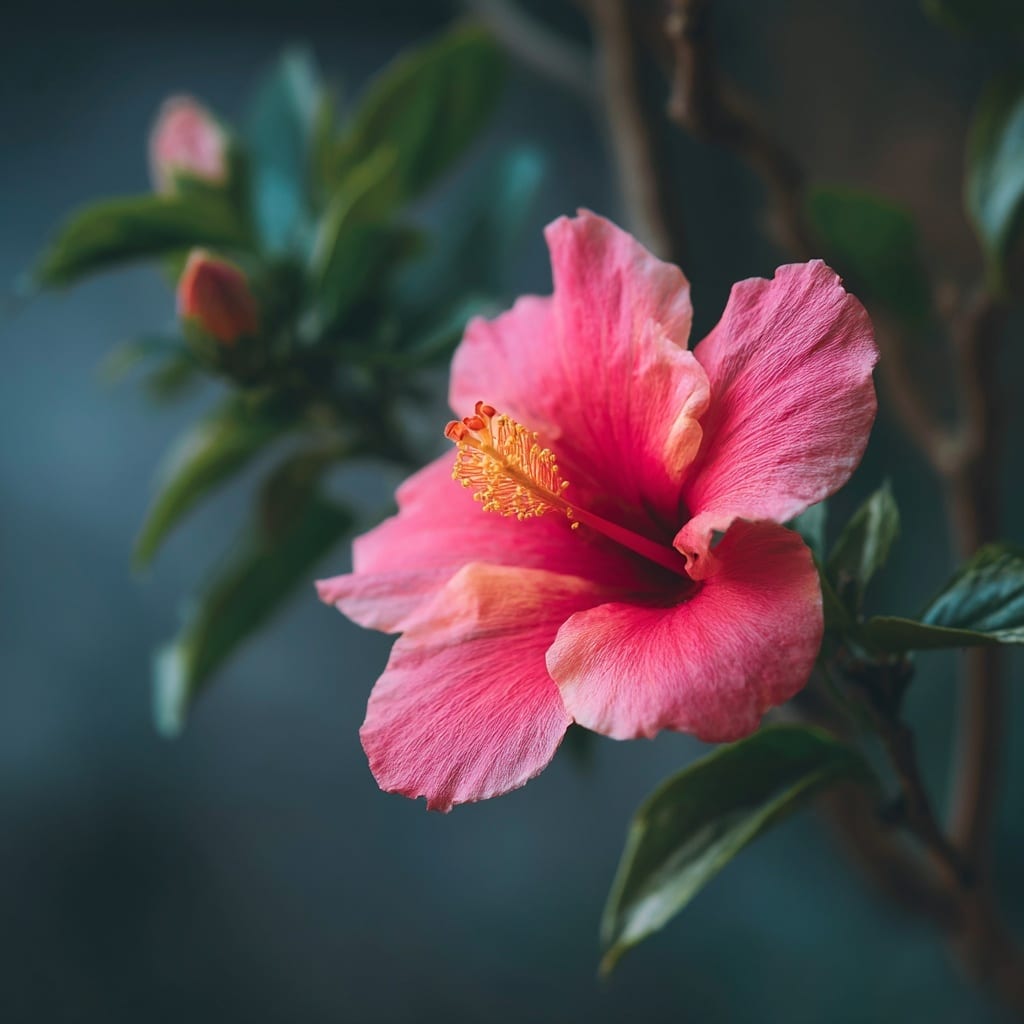Flower hibiscus holds more than just visual appeal—it blooms with stories of love, strength, femininity, and healing. Known for its tropical charm and vibrant colors, this flower is cherished in gardens, homes, and cultures across the globe. But its beauty is only the beginning.
In many traditions, the flower hibiscus symbolizes fleeting moments, spiritual growth, and deep emotional resonance. Whether steeped in teas, used in rituals, or simply admired for its bold petals, the hibiscus carries meaning that touches both the heart and soul. In this guide, we’ll explore the symbolism of hibiscus flowers, the messages behind their colors, their cultural importance, spiritual uses, and even how they influence our dreams and health.
Table of Contents
What Does the Flower Hibiscus Symbolize?
The flower hibiscus is a powerful emblem of life’s impermanence and emotional beauty. Its blossoms, which often last just a single day, remind us to embrace the present moment fully. This delicate cycle serves as a gentle nudge to appreciate the now, instead of waiting for “someday.”
Symbolically, the flower hibiscus represents grace, femininity, and openness. Its soft, radiant petals evoke vulnerability and inner strength—making it a flower often associated with romantic attraction and emotional depth.
In many cultures, giving or wearing a hibiscus flower signals admiration or love, but it can also reflect one’s mindfulness and awareness of nature’s fleeting beauty. The bloom becomes a mirror, showing us the balance between tenderness and strength, boldness and transience.
Whether planted in gardens or worn behind the ear, the flower hibiscus encourages a mindful, heart-centered approach to life—embracing both its pleasures and its impermanence.
Spiritual Significance of Flower Hibiscus
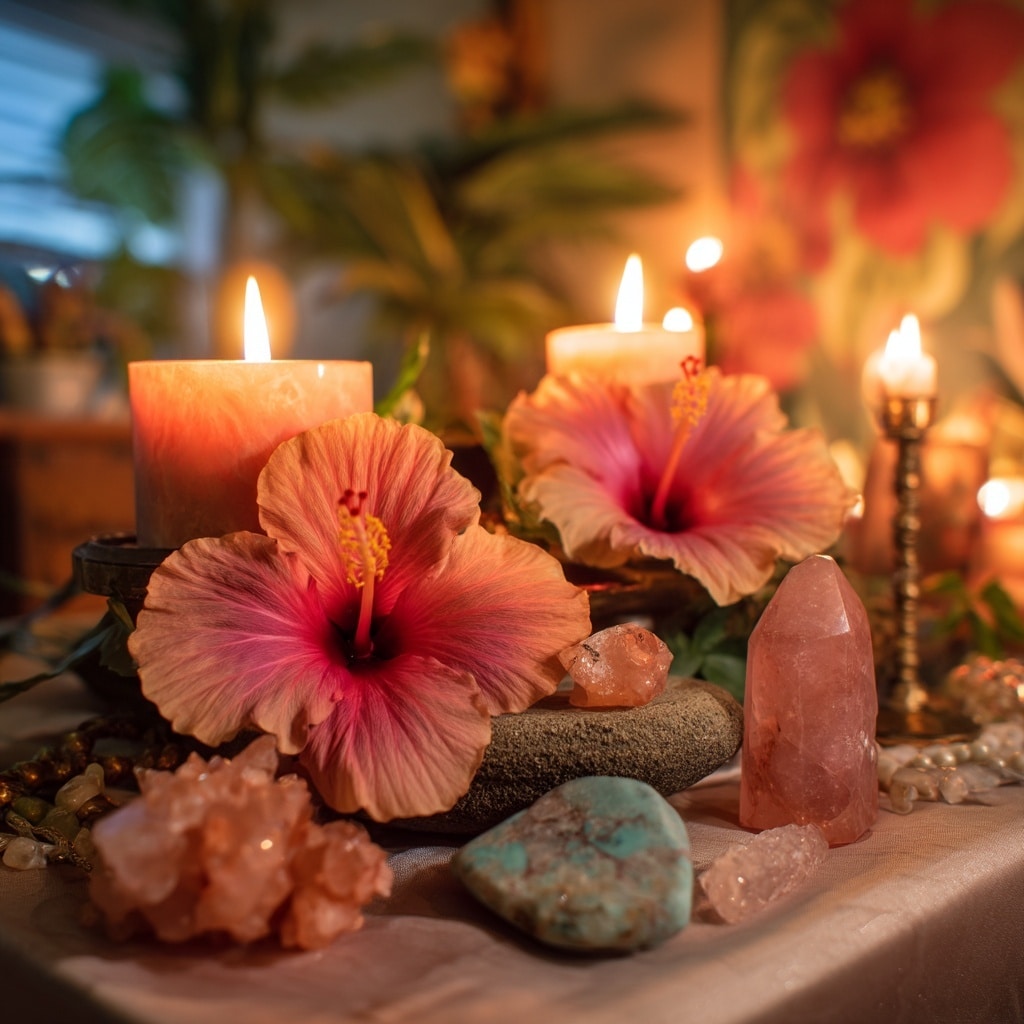
In spiritual practices, the flower hibiscus is far more than just an ornamental bloom—it’s a symbol of transformation, balance, and divine energy. Across many traditions, it’s believed to bridge the physical and spiritual realms, making it a powerful ally in meditation, ritual, and healing work.
At its core, the flower hibiscus resonates with the heart chakra, the energy center linked to love, compassion, and emotional healing. Its open, layered petals reflect the openness of the heart, encouraging emotional release, inner growth, and vulnerability in safe, sacred spaces.
The hibiscus is also deeply connected to the divine feminine. Its abundant form, rich color, and reproductive symbolism tie it to fertility, creation, and the cycles of life. In many cultures, it’s used to honor goddesses or feminine energies during spiritual ceremonies.
Practitioners often use flower hibiscus in rituals to:
- Clear energetic blockages
- Strengthen emotional resilience
- Attract love and positive relationships
- Center and ground the spirit
Placed on altars or brewed into calming teas, the flower hibiscus offers a sense of clarity and connection, promoting emotional harmony and spiritual renewal.
The Meaning of Flower Hibiscus by Color

Colors carry energy—and the flower hibiscus expresses unique meanings through each vibrant shade. From passion to peace, the hue of the hibiscus you encounter can reveal a deeper emotional or spiritual message. Here’s what each color traditionally represents:
❤️ Red Hibiscus
Symbolizes: Passion, deep love, and desire
Red hibiscus flowers are often gifted in romantic settings, as they carry a bold, sensual energy. They express admiration, attraction, and emotional intensity—making them perfect symbols for new love or reignited connections.
🤍 White Hibiscus
Symbolizes: Purity, spiritual clarity, and innocence
White hibiscus blooms are used in meditation and prayer rituals. Their serene color promotes peace and enlightenment, making them ideal for sacred spaces or healing environments.
💗 Pink Hibiscus
Symbolizes: Gentle love, friendship, and feminine energy
Pink varieties of the flower hibiscus represent kindness, affection, and gratitude. They’re often associated with nurturing relationships and heartfelt emotional connections.
💛 Yellow Hibiscus
Symbolizes: Joy, optimism, and good luck
Yellow hibiscus flowers radiate sunshine and cheer. In many cultures, they’re seen as bringers of fortune and happiness, brightening both homes and moods.
💜 Purple Hibiscus
Symbolizes: Mystery, royalty, and spiritual growth
The rare and striking purple hibiscus invites creativity, intuition, and a deeper connection with the unseen world. It’s often used in spiritual rituals to support transformation and enlightenment.
💙 Blue Hibiscus
Symbolizes: Calm, serenity, and introspection
Although uncommon, blue hibiscus flowers are treasured for their tranquil energy. They symbolize peace, emotional balance, and a reflective state of mind—perfect for meditation and personal healing work.
Cultural Symbolism of the Flower Hibiscus Around the World
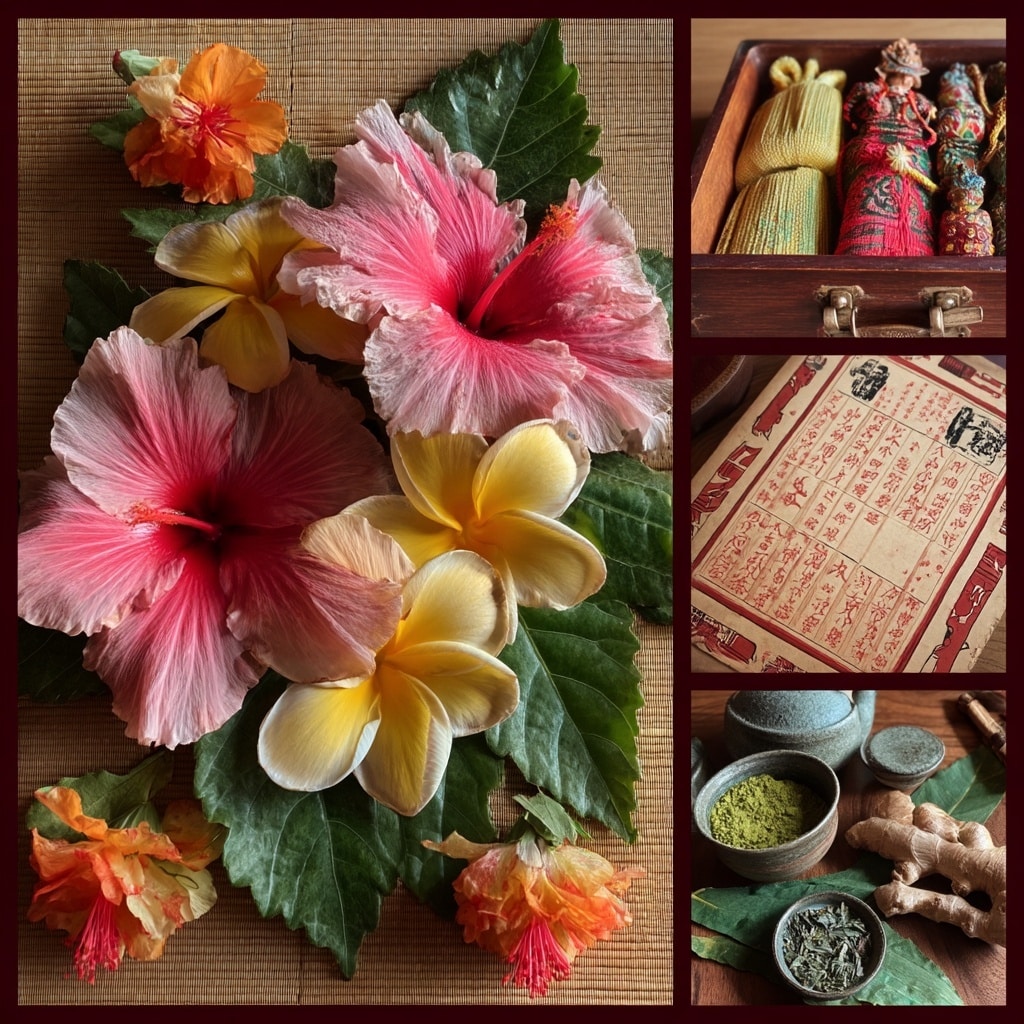
The flower hibiscus is more than a tropical beauty—it carries deep cultural meaning across the globe. In many countries, it’s a symbol of identity, spirituality, hospitality, and even social status. Here’s how various cultures embrace this extraordinary bloom:
Hawaii – Symbol of Hospitality and Joy
In Hawaii, the yellow hibiscus is the official state flower. It represents welcome, warmth, and joy. Hibiscus flowers are commonly used in leis and worn behind the ear to signal relationship status—left ear if taken, right ear if single. The flower is also a beloved emblem of aloha spirit.
India – Sacred Offering to the Goddess Kali
In Indian traditions, the red flower hibiscus holds sacred power. It’s offered to the fierce goddess Kali as a symbol of strength, transformation, and devotion. Its vivid color mirrors Kali’s fiery energy and is also used in rituals to promote fertility and vitality.
China – Emblem of Fame and Prosperity
In Chinese culture, the hibiscus represents wealth, fleeting success, and personal glory. Though beautiful, its short life span serves as a reminder to cherish accomplishments before they fade—making it a popular motif in poetry and art.
Japan – Sign of Gentleness
Known as fuyou in Japan, the hibiscus is a symbol of kindness and gentleness. Unlike in other cultures, its meaning here leans more toward modesty and emotional warmth than romantic or spiritual themes.
Caribbean & Latin America – Health, Vitality, and Celebration
In many Caribbean and Latin American regions, the flower hibiscus is widely brewed into tea, symbolizing health, vitality, and cultural pride. In Mexico, it’s called Flor de Jamaica and used in refreshing beverages during family gatherings and holidays.
Africa – Unity, Healing, and Strength
In African traditions, the hibiscus stands for unity, courage, and community healing. It’s central to herbal remedies and hospitality rituals. Hibiscus tea (karkadeh) is often served to guests as a warm gesture of welcome.
South Korea – National Identity and Resilience
The hibiscus (mugunghwa) is the national flower of South Korea. Its name means “eternal blossom that never fades,” symbolizing perseverance, strength, and national pride. It’s deeply embedded in Korean literature, art, and patriotic expression.
Egypt – Celebration and Social Harmony
In Egypt, hibiscus tea—known as karkadeh—is a staple of celebration and connection. Often served during weddings and festivals, it represents unity, wellness, and togetherness in both social and religious contexts.
Polynesia – Life Transitions and Sacred Cycles
On the Polynesian islands, the flower hibiscus is used in ceremonies marking births, marriages, and even deaths. It symbolizes eternal beauty and the cyclical nature of life, reinforcing the connection between people and the natural world.
Western Cultures – Romance and Exotic Appeal
In Western countries, the hibiscus is often seen as a symbol of romantic escape, exotic beauty, and tropical luxury. It’s frequently used in home décor, fashion, and branding to evoke vacation vibes and emotional allure.
Spiritual & Emotional Uses of the Flower Hibiscus

Beyond its visual charm, the flower hibiscus plays an important role in both emotional well-being and spiritual practices. Its energy is believed to be soft yet powerful—perfect for healing, centering, and personal growth.
Emotional Healing
The calming presence of the flower hibiscus supports emotional clarity and helps dissolve lingering tension. Many people place fresh or dried hibiscus flowers in their living spaces to:
- Reduce stress and anxiety
- Encourage self-love and confidence
- Promote emotional balance and harmony
Its vibrant colors alone can elevate mood and create a soothing atmosphere, making it a popular addition to spaces meant for relaxation or reflection.
Ritual and Spiritual Work
In ritualistic settings, the flower hibiscus is revered for its ability to cleanse negative energy and enhance spiritual intention. Whether used fresh, dried, or infused into oils, it’s a favorite for:
- Love spells and relationship rituals
- Meditation and chakra alignment (especially the heart chakra)
- Protection and energetic grounding
Hibiscus petals are often added to baths, altar arrangements, or spell jars for attracting love, deepening intuition, or fostering inner peace.
Sacred Space Enhancement
Placing the flower hibiscus in your home or spiritual practice area is said to:
- Invite positive vibrations
- Strengthen divine feminine energy
- Clear emotional blockages
Its soft, open shape serves as a visual reminder to stay emotionally open while staying grounded in truth and presence.
Flower Hibiscus in Tea and Health
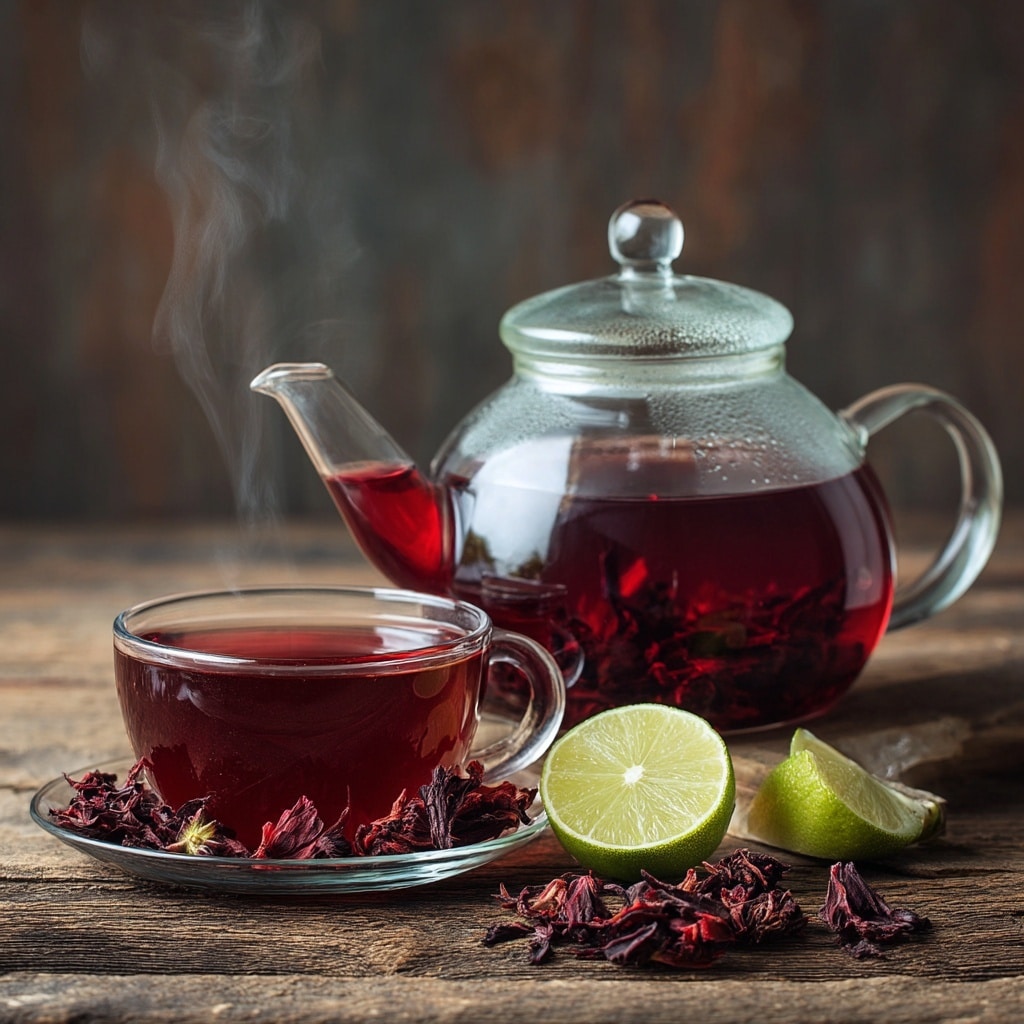
The flower hibiscus isn’t just spiritually enriching—it also offers a wide range of health benefits, especially when brewed into a vibrant, tangy tea. Revered in traditional medicine across continents, hibiscus tea is both a refreshing drink and a natural remedy.
Health Benefits of Hibiscus Tea
Rich in antioxidants like anthocyanins and vitamin C, hibiscus tea supports overall wellness. Drinking it regularly may help with:
- Lowering blood pressure
- Reducing bad cholesterol (LDL)
- Improving liver function
- Easing menstrual cramps
- Boosting immune response
Its anti-inflammatory and antimicrobial properties make it a gentle but effective addition to a health-conscious routine.
Emotional and Spiritual Effects
The flower hibiscus also has subtle energetic properties when consumed as tea. It’s commonly used to:
- Calm the nervous system
- Enhance meditation and spiritual awareness
- Promote relaxation and emotional clarity
- Encourage love, forgiveness, and heart chakra alignment
In ritual or spiritual settings, sipping hibiscus tea is often part of self-care or cleansing practices, particularly for emotional release or romantic intention setting.
Easy Hibiscus Tea Recipe
Here’s a simple way to brew your own healing cup:
Ingredients:
- 2 cups of fresh hibiscus petals (or ½ cup dried)
- 3 tablespoons of fresh lime juice
- ¼ cup of honey (optional)
- 4 cups of water
Instructions:
- Boil the petals in water for 15–20 minutes.
- Strain into a jug or teapot.
- Stir in honey and lime juice to taste.
- Serve hot or cold.
This vibrant red tea is not only visually striking—it’s also a deeply nourishing and spiritually soothing drink.
Flower Hibiscus in Dreams

Dreaming of the flower hibiscus often carries symbolic meaning tied to your emotional state, opportunities, and personal growth. Because of the flower’s fleeting nature and deep associations with love and transformation, its appearance in dreams is usually a message from the subconscious.
General Meaning
Seeing a hibiscus in your dream may reflect:
- A fleeting opportunity — something beautiful and meaningful may be approaching, but only briefly
- A call to presence — you may need to slow down and savor the moment
- A desire for emotional connection or healing
The condition of the flower also matters. A blooming hibiscus could signal new beginnings or romance, while a wilting one might suggest missed chances or emotional fatigue.
Color Symbolism in Dreams
Just like in waking life, the color of the flower hibiscus in your dream adds a layer of meaning:
- Red: Passion, attraction, or intense emotions
- White: Peace, forgiveness, or a desire for spiritual clarity
- Pink: Gentle affection, reconciliation, or emotional support
- Yellow: Joy, confidence, or a reminder to embrace optimism
- Purple: Intuition, spiritual awakening, or inner transformation
- Blue: Reflection, calm, and emotional introspection
Pay attention to the context. Who gave you the flower? Where did it appear? These details often point to relationships or choices that deserve more thought or care.
Most Popular Varieties of the Flower Hibiscus
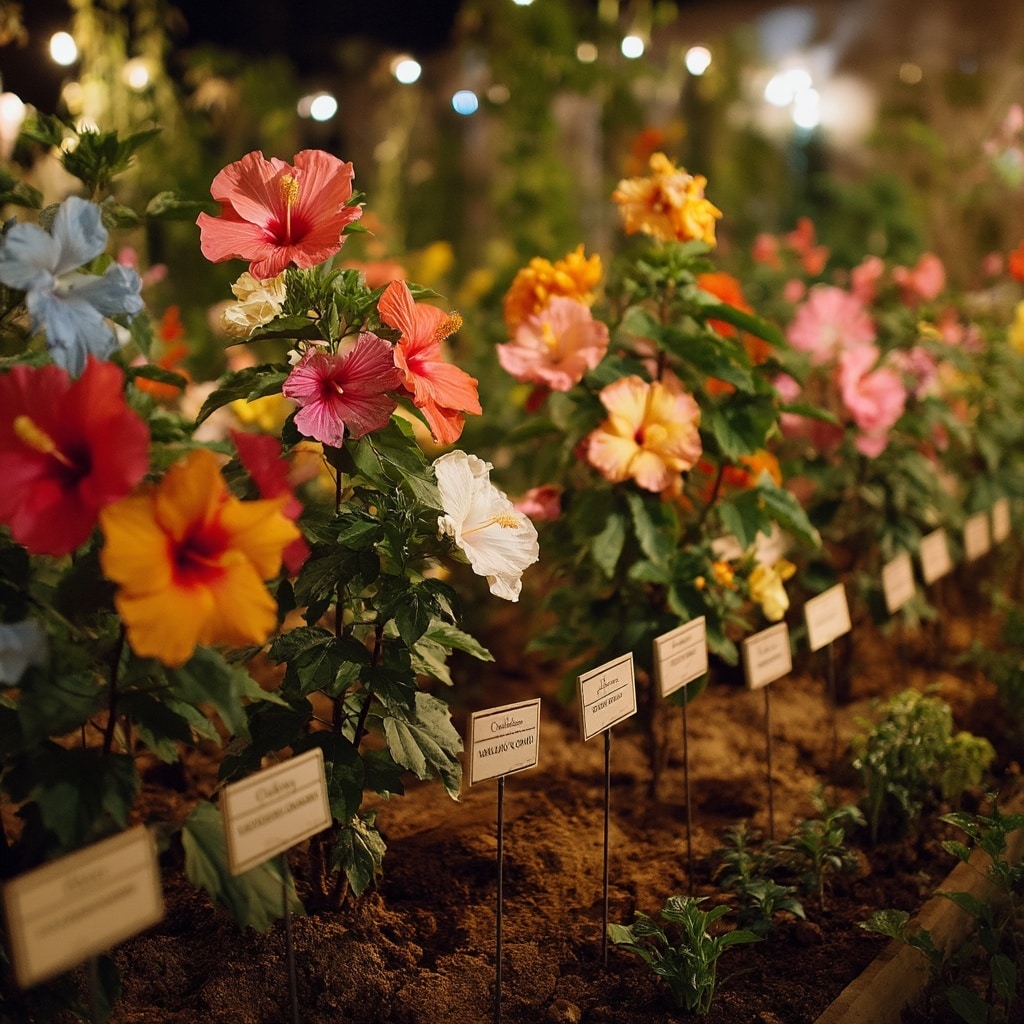
The flower hibiscus family is incredibly diverse, with hundreds of stunning species and hybrids grown around the world. Each variety brings its own charm—whether in bold color, unique shape, or cultural significance. Below are some of the most popular and garden-worthy types:
Hibiscus rosa-sinensis
Known as the Chinese hibiscus or tropical hibiscus, this variety is beloved for its large, vivid blooms in red, orange, pink, and yellow. It thrives in warm climates and is often used in landscaping and potted arrangements.
🍒 Hibiscus sabdariffa
Commonly called Roselle, this variety is cultivated for its calyces—the part used to make hibiscus tea. Its deep red petals are packed with antioxidants and flavor.
🌊 Hibiscus moscheutos
Also called swamp hibiscus or hardy hibiscus, this cold-tolerant type boasts enormous flowers and thrives in wetlands. A showstopper in temperate gardens.
🌼 Hibiscus syriacus
Known as the rose of Sharon, this is a hardy deciduous shrub with pastel-colored blooms. It’s popular in North America and Europe and blooms into late summer.
🍁 Hibiscus acetosella
Nicknamed the cranberry hibiscus, this plant is grown as much for its striking burgundy foliage as for its small pink flowers. It adds color and contrast to any garden bed.
🌸 Hibiscus mutabilis
Also called the Confederate rose, this fascinating variety changes color throughout the day—from white in the morning, to pink by noon, and red by evening.
🧵 Hibiscus schizopetalus
This fringed hibiscus is known for its intricate, lacy petals that dangle like lanterns. Native to East Africa, it’s prized for its exotic appearance.
🔥 Hibiscus coccineus
Also called scarlet hibiscus or Texas star, this variety features deep red, star-shaped blooms and can grow impressively tall.
🤍 Hibiscus arnottianus
Native to Hawaii, this white hibiscus is known for its delicate fragrance and resistance to pests. It’s one of the few naturally scented hibiscus types.
💗 Hibiscus grandiflorus
True to its name, this giant-flowered variety produces soft pink blossoms and flourishes in humid, subtropical climates.
🌾 Hibiscus tiliaceus
Often found along coasts, this yellow-flowered shrub doubles as an erosion controller and ornamental tree in tropical areas.
⏳ Hibiscus trionum
Nicknamed “flower-of-an-hour,” this type blooms only for a single day, featuring pale yellow petals with a dark center. A true symbol of impermanence.
💜 Hibiscus denisonii
A rare and ornamental variety featuring soft lilac-colored flowers, often found in curated tropical gardens
🌿 Hibiscus rosa-sinensis ‘Cooperi’
A variegated cultivar with striking pink flowers and multi-toned green and white foliage—perfect for decorative hedges and statement planters.
🧬 Hibiscus × hybridus
A group of hybridized varieties known for extra-large blooms, disease resistance, and a wide range of vibrant colors. Ideal for gardeners looking for bold impact
Each of these hibiscus varieties showcases the incredible diversity within the flower hibiscus species—offering choices for every climate, purpose, and aesthetic.
🌞 Conclusion
The flower hibiscus is far more than a decorative bloom—it’s a living symbol of beauty, love, transformation, and cultural richness. Whether admired for its vibrant petals, brewed into a healing tea, or used in sacred rituals, the hibiscus invites us to live more mindfully, love more deeply, and stay rooted in the present moment.
From the bold reds of passion to the tranquil blues of introspection, each hibiscus color holds a message. And across continents—from the temples of India to the beaches of Hawaii—this remarkable flower has woven itself into the hearts and traditions of people everywhere.
If you’re looking to add both elegance and meaning to your garden or lifestyle, the flower hibiscus is a timeless and soulful choice.

